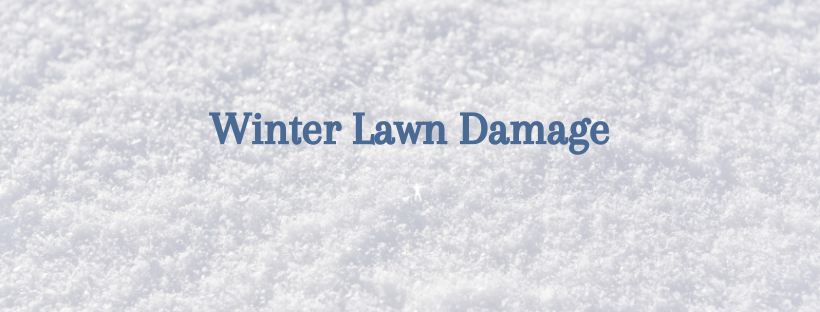Winter Lawn Damage

Common Winter Lawn Damage
It’s officially the time of year with cold weather and snowy forecasts. Here’s an old blog post we revamped for the new season. Damage to one’s property can be common during the winter months. From rodents, snow mold, to salt and snow plow damages; winter can be a very hard time for lawns across the Susquehanna Valley.
In preparation for the winter season; we always recommend treating your yard with a wintering fertilizer. When applied; the nutrients in the winterizer treatment are distributed and stored in the root system of your grass. These nutrients provide necessary nourishment to your lawn in the early spring. We apply the Winter fertilizer between October and November, before the lawn goes dormant.
Learn about our 5-Step Lawn Health program here.
So, what do you do when the snow melts and your lawn is left looking less than desirable? Check out the chart below for solutions to some of the most common winter lawn damages we see.
Common Damages & Solutions
Damage:
Voles are small rodents that look similar to mice. They have shorter tails and legs and a stocky body. Voles eat the grass when it’s buried under the snow, leaving tunnels and dead grass behind. They chew the grass stems off, leaving the roots and crowns.
Solution:
Often times the grass will grow back on its own. Once the soil has dried out a bit, then you can rake away the dead grass to allow for the new stems to grow. Adding new grass seed to the affected areas will help to speed up the overall appearance of your lawn as well.
Damage:
Snow Mold is a lawn disease that typically shows up, after the snow melts. It looks like large white or yellow patches of lawn that may look like the grass is “glued” together.
Solution:
The symptoms of snow mold can be cleaned up with a light raking, as to not disturb the healthy grass around the affected areas. Adding new grass seed to the affected areas will help to speed up the overall appearance of your lawn as it recovers.
With snow mold, the best precaution to take is prevention. Read more about lawn health and snow mold here.
Damage:
Salt Damage is caused by heavy salt use on roadways and sidewalks. You may notice this more if your lawn is against, or close to, a busy road or sidewalk where snow is mixed with salt and often piled up during the winter months.
Solution:
Treating your lawn with pelletized gypsum can help to reverse salt damage. The gypsum counteracts the salt with calcium and sulfur, which will help to restore the grass and boost new growth. It can also help your soil retain water.
We have one last solution for you. Contact us to chat about concerns regarding damage to your lawn, schedule a free consultation, and ask about our Lawn Health Program. We are here to help and want you to have the best results for your lawn.

Leave a Reply